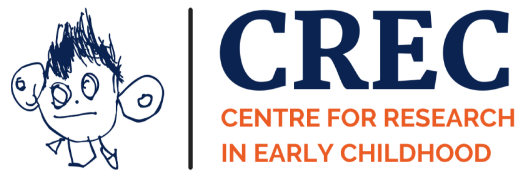Outdoor Community Learning: Early Educators’ Out-and-About Experiences in Urbanized Places
By Siew Chin Ng
Melbourne Graduate School of Education, The University of Melbourne, Australia
Whilst working as a research assistant in Singapore, I had observed several activities in numerous early childhood classrooms mainly conducted in the indoor settings. Being a nature lover, it made me wonder how outdoor experiences can be planned for and carried out more frequently in a way that contribute to holistic learning for young children. Subsequently, I had proposed and delved into the topic ‘Holistic Education in Outdoor Learning’ focusing on early educators’ experiences and practices for my PhD study.
Learning in the outdoors are most commonly associated with forest, beach and bush settings (Elliot & Chancellor, 2014). However, there are urbanized countries which do not have easy access to widespread natural spaces and resources. One example of such urbanized landscape is Singapore, the country where this study was conducted. Urbanised landscapes might consider community facilities and settings which have been described as public open spaces consisting parks, shopping malls and community centres (Chaudhury et al., 2015). These spaces are accessible to the public for various uses, which can promote the engagement and social connectedness of community members in the neighbourhood environment (Lachowycz & Jones, 2013). The integration of community spaces, persons and resources has also been recommended in Singapore’s early years frameworks as well as the national guide for outdoor learning.
Adopting the Common Worlds approach (Common Worlds Research Collective, 2020) for this study, emphasis is being placed on the relations between human and more-than-human worlds, de-centring humans as all-knowing agents, and cultivate ongoing efforts to recognise the inseparable entanglements of social and natural worlds (Taylor, 2017). These connections in the outdoors may promote bonds, which influence thinking and re-thinking actions of humans towards more-than-humans in the environment.
To instill these notions of common worlds in children, we first start with promoting them with early educators. These relations in the common worlds can be shaped by educators’ beliefs, practices and barriers (e.g., Ernst, 2014), as well as their own outdoor experiences (e.g., Bilton, 2020). With a focus on exploring urbanized landscapes through the provocations adapted from the Out and About Manifesto (Out and About, 2019), this qualitative study reports findings based on pedagogical conversations from early educators of five-to-six years old children in Singapore. Analyses reveal that educators located in an urbanized landscape engage with the outdoors by exploring their everyday places including walking pathways, bus stop and neighborhood gardens. Educators’ reflections illustrated their connections to these urbanized places, by linking to their childhood experiences, re-thinking about their care for the environment, re-considering the purposes of materials and technology in relationship building. The findings suggest that educators’ awareness and appreciation of their everyday outdoor environment were stimulated through the Out-and-About manifesto, which demonstrate its value for outdoor-related professional learning programmes.
With this, I look forward to sharing part of the preliminary findings from my PhD study at BECERA 2022, see you there!
(Special acknowledgement to the support provided through the Australian Government Research Training Program Scholarship awarded by the Australian Commonwealth Government and the University of Melbourne.)
Siew Chin Ng is currently a graduate researcher / PhD candidate and a tutor at the Melbourne Graduate School of Education, The University of Melbourne, Australia. Her teaching and research interests include early childhood pedagogy and curriculum, adult-child interaction and teacher professional learning.
Email: siewchin.ng1@unimelb.edu.au
Researchgate: https://www.researchgate.net/profile/Siew-Chin-Ng
Linkedin: https://www.linkedin.com/in/siew-chin-ng/
References
Bilton, H. (2020). Values stop play? Teachers’ attitudes to the early years outdoor environment. Early Child Development and Care, 190(1), 12–20. https://doi.org/10.1080/03004430.2019.1653548
Chaudhury, M., Oliver, M., Badland, H. M., & Mavoa, S. (2015). Public open spaces, children’s independent mobility. In B. Evans, J. Horton, & T. Skelton (Eds.), Play and Recreation, Health and Wellbeing (pp. 1–21). Springer Science+Business Media.
Common Worlds Research Collective. (2020). Learning to become with the world: Education for future survival. United Nations Educational, Scientific and Cultural Organization (UNESCO): Education Sector. https://unesdoc.unesco.org/ark:/48223/pf0000374032
Elliot, S., & Chancellor, B. (2014). From forest preschool to bush kinder: An inspirational approach to preschool provision in Australia. Australasian Journal of Early Childhood, 39(4), 45–53. https://doi.org/10.1177/183693911403900407
Ernst, J. (2014). Early childhood educators’ use of natural outdoor settings as learning environments: An exploratory study of beliefs, practices, and barriers. Environmental Education Research, 20(6), 735–752. https://doi.org/10.1080/13504622.2013.833596
Lachowycz, K., & Jones, A. P. (2013). Towards a better understanding of the relationship between greenspace and health: Development of a theoretical framework. Landscape and Urban Planning, 118, 62–69. https://doi.org/10.1016/j.landurbplan.2012.10.012
Out and About. (2019). Out and about manifesto. https://www.goingoutandabout.net/manifesto
Taylor, A. (2017). Beyond stewardship: Common world pedagogies for the Anthropocene. Environmental Education Research, 23(10), 1448–1461. https://doi.org/10.1080/13504622.2017.1325452

